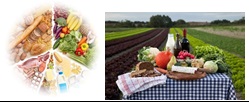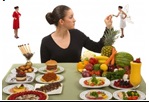Introduction
Farm-to-Table food is regarded as a panacea, and many people say that they have healthy diets as they consume farm-to-table food. This approach involves buying food straight from local farmers rather than supermarkets or retail chains (Poole, Mundorf, Englar, & Rose, 2015). However, this is far from being the reality. You should be aware of the major issues associated with this type of food. These include unhealthy proportions and components, and foodborne diseases.
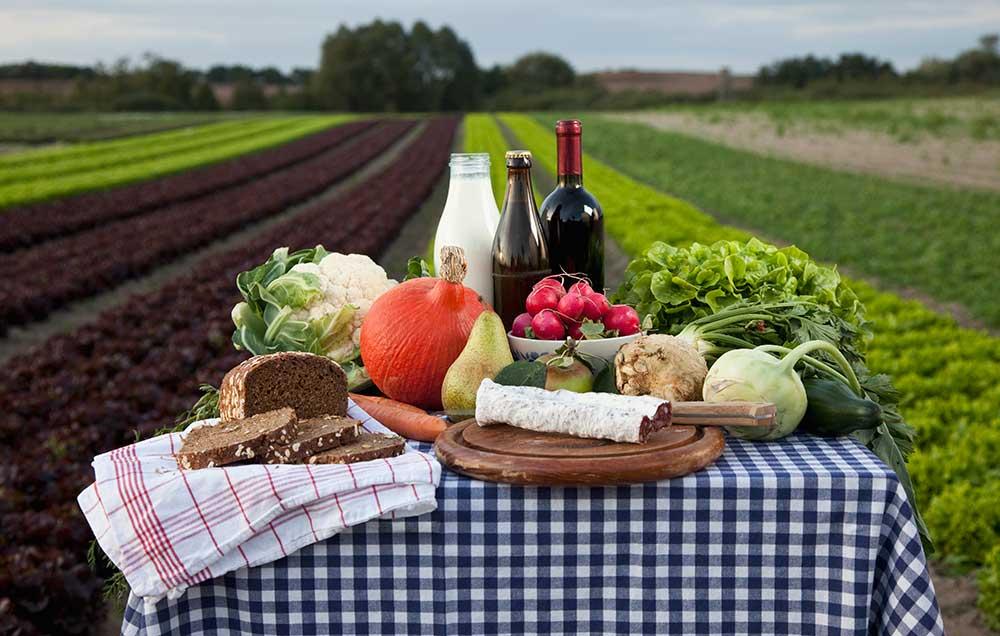
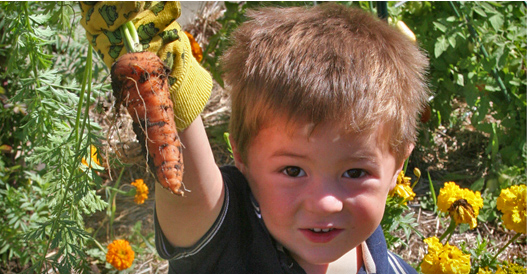
Modern American families try to adhere to the principles of Healthy People 2020 with its promotion of the so-called farm-to-table food and farm-to-school programs (Sizer & Whitney, 2013). However, many people fail. Do you want to know why?
Unhealthy Proportions and Components
One of the major mistake (which is, nevertheless, quite common) is associated with the amount of food and types of foods consumed (Sizer & Whitney, 2013). Many parents do not mind or even encourage large portions. They think that healthy food cannot be unhealthy. In simple terms, they think the more you eat healthy foods, the healthier you become. Furthermore, many think that products produced by local farmers simply cannot be unhealthy as no chemicals are used. For instance, some believe that meat from a farm does not contain as many calories as similar products bought from retailers. Clearly, this is very wrong as excessive consumption of any products can lead to eating disorders and obesity.
It is crucial to make sure that your child has a balanced diet. The consumption of vegetables, meat, fish, fruit, and so on should be well-thought.
Your child should eat a variety of foods to have the necessary energy and good mood to develop properly.
Foodborne Diseases
Foodborne diseases are, unfortunately, quite common and result in approximately three thousand deaths in the United States annually (Liu, Nelson, Mahapatra, & Styles, 2015). It noteworthy that these illnesses occur due to improper production as well as the use of products.
First, producers may violate some rules or fail to comply with major regulations and norms, which leads to the contamination of foods with pathogens or even pests. For instance, farmers can fail to ensure proper quality of soil, which will lead to the contamination of products.
To avoid such issues, you should make sure you know the farmer you are buying from. Do not hesitate to ask about ways used to grow food. Ask if the farmer follows major guidelines of Good Agricultural Practices and/or Good Handling Practices.
Secondly, many people are still unprepared to deal with farm-grown foods. It is crucial to remember that such products require certain temperature and storage peculiarities.
Do not hesitate to ask farmers (or search for the information online) about this aspect.
What Should You Do?
To sum up, it is a good idea to use farm-to-table food. However, it is essential to remember the following:
- Make your diet balanced (see the picture below);
- Do not surfeit;
- Know farmers you buy from;
- Ask questions concerning the quality of products;
- Ask about ways to keep the food fresh or cook properly.
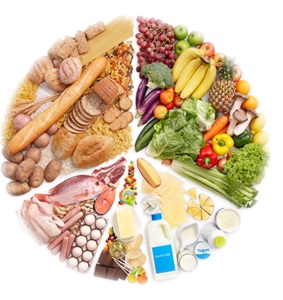
Follow these simple tips, and you will enjoy the benefits of farm-to-table food.
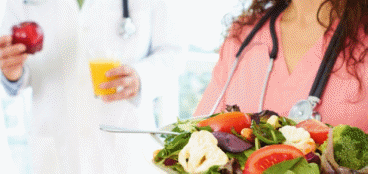
Farm-to-table food and farm-to-school programs have become an indispensable part of the American everyday life. People are becoming more concerned about their diets, which is a positive trend. However, public nurses should be aware of some negative aspects of this trend to mitigate its adverse effects on the public health. Patient education and nursing advocacy have proved to be effective measures that can make a difference. When it comes to safe farm-to-table food, it is important to pay specific attention to such spheres as major factors contributing to health hazards, ways to mitigate risks, healthy diet and lifestyle, vulnerable populations and so on.
Being a public nurse means caring for patients as well as communities. People have to face numerous challenges, and nursing professionals can help them mitigate many health risks. The consumption of healthy food is one of the essential premises of public health. However, people should be taught how to eat healthy food.
For instance, such trend as farm-to-table is positive as it helps people consume healthy food, but it is still quite a controversial practice.
Explore ways to make a difference in your community.

Production
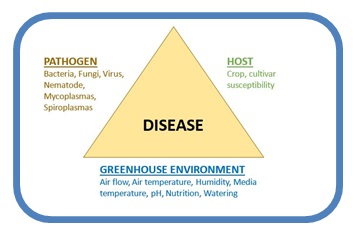
To understand the central factors contributing to health risks, it is necessary to have in mind the epidemiological triangle (see Figure 1). Food provided by farmers (crops and animals) can be affected by various pathogens including but not confined to bacteria, virus, mycoplasmas, and so on (Sizer & Whitney, 2013). Hosts are crops and animals. Greenhouse environment is an important factor that may cause health issues in people.
It is essential to make sure that major stakeholders (farmers and consumers) understand possible hazards associated with farming. Farmers should follow the existing while consumers should know that they have the right to know what exactly they eat and what risks have been addressed.
Consumption
It may be hard to believe, but many people are simply unprepared to handle farm-to-table food as they are not aware of proper storing and cooking techniques (Sizer & Whitney, 2013). It can be effective to educate people on ways to transport, store and cook the food they buy from local farmers.
Vulnerable Populations
It is believed that people consuming unhealthy food are the major potential victims when it comes to farm-to-table practice. Of course, consumers (all people irrespective of age, gender, ethnicity, occupation and so on) should know about the associated risk and ways to mitigate them. However, farmers are also at risk of developing various diseases.
A recent study unveils the prevalence of Livestock-Associated Methicillin-Resistant Staphylococcus Aureus (LA-MRSA) in farmers and their families (see figure 2). Therefore, farmers should be educated on possible health risks they may face is they do not comply (as well as comply) with certain guidelines and regulations.
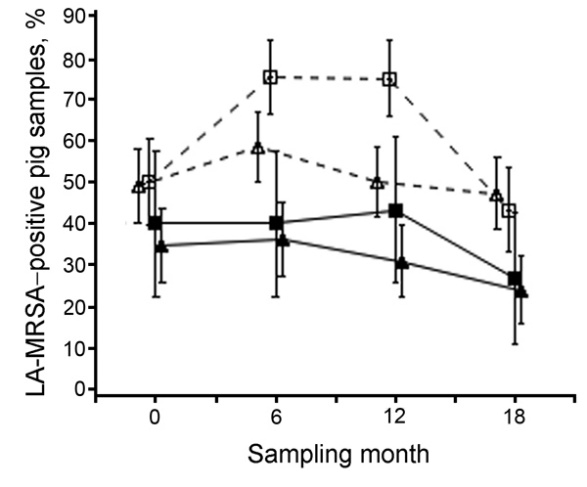
How to make a difference?
- Never stop researching and learning more about the issue and ways to address it.
- Educate people and encourage them to live healthy lifestyles and have healthy diets.
- Do not forget that different groups may have different needs and face different hazards.
Twitter Campaign
- #whyfarmtotable
Farm-to-table food is grown and sold directly by farmers, which reduces the risk of food contamination during the production cycle.
- #whyfarmtotablereally
You buy food from a person you get to know well rather than from a soulless retailer who may fake the exact location or name of the farm.
- #foodbornediseasesimpact
Approximately three thousand Americans die each year due to foodborne diseases. Mind what you eat!
- #safetyensured
Farmers obtain quality certificates, follow guidelines and regulations (Sizer & Whitney, 2013).
- #goodpractice
Responsible farmers who care for their reputation follow the guidelines of Good Agricultural Practices and/or Good Handling Practices.
- #safetycontroversy
Farmers may fail to comply with the regulations, which leads to health hazards.
- #notoriouscase
Cantaloupes grown on Jensen Farms caused the outbreak of listeriosis leading to the hospitalization of 147 people and 33 deaths (CDC, 2012).
- #areonlyfarmerstoblame
Foodborne diseases are often caused by improper use of the food provided by local farmers.
- #whoistoblame
People often fail to wash, transport, and store products properly, which is associated with health hazards (Sizer & Whitney, 2013).
- #healthydiet
Buying from a local farm does not mean your diet is healthy. A balanced diet is still your responsibility. Good portions and proportions!
- #knowyourfarmer
Communicate with your farmer, ask questions concerning quality and practices used. You should know what you buy.
- #yourfamily
Encourage your family to use farm-to-table food and have a healthy diet and lifestyle. Being healthy is fashionable again!
- #telleveryone
Become an advocate of farm-to-table food and tell people about the benefits of this practice.
- #betruthful
Do not forget about the controversy associated with farm-to-table food and tell people how to mitigate the risks.
- #learnmore
Do not stop learning more about farm-to-table food as new facts appear every minute. You may, finally, decide whether you need it.
Audio Public Service Announcement Script
- Author:
- Date:
- Name of Script: Farm-to-table food: How to make sure your diet is truly healthy
- Intended Audience: School students’ parents
Video Public Service Announcement Script
- Author:
- Date:
- Name of Script: Farm-to-table food: How to make sure your diet is truly healthy
- Intended Audience: Those concerned about healthy lifestyles (irrespective of age, ethnicity, gender, and so on)
Bibliography
CDC (Centers for Disease Control and Prevention). (2012). Multistate outbreak of Listeriosis linked to whole cantaloupes from Jensen Farms, Colorado. Web.
CDC (Centers for Disease Control and Prevention). (2017). FoodNet data and reports. Web.
Dorado-García, A., Dohmen, W., Bos, M., Verstappen, K., Houben, M., Wagenaar, J., & Heederik, D. (2015). Dose-response relationship between antimicrobial drugs and livestock-associated MRSA in pig farming. Emerging Infectious Diseases, 21(6), 950-959.
Herman, V. (2015). The farm-to-table backlash is here.Fortune. Web.
Liu, X., Nelson, M., Mahapatra, A., & Styles, E. (2015). Perceptions of information gaps in farm-to-table studies. Food Control, 50, 663-669.
Maronpot, R., Koyanagi, M., Davis, J., Recio, L., Marbury, D., Boyle, M., & Hayashi, S. (2015). Safety assessment and single-dose toxicokinetics of the flavouring agent myricitrin in Sprague–Dawley rats. Food Additives & Contaminants: Part A, 32(11), 1799-1809.
Poole, M., Mundorf, A., Englar, N., & Rose, D. (2015). From nutrition to public policy: Improving healthy food access by enhancing farm-to-table legislation in Louisiana. Journal of the Academy of Nutrition and Dietetics, 115(6), 871-875.
Sizer, F., & Whitney, E. (2013). Nutrition: Concepts and controversies. Belmont, CA: Cengage Learning.
U.S. Department of Agriculture. (2012). 2012 census of agriculture. Web.
Liu, X., Nelson, M., Mahapatra, A., & Styles, E. (2015). Perceptions of information gaps in farm-to-table studies. Food Control, 50, 663-669.
Poole, M., Mundorf, A., Englar, N., & Rose, D. (2015). From nutrition to public policy: Improving healthy food access by enhancing farm-to-table legislation in Louisiana. Journal of the Academy of Nutrition and Dietetics, 115(6), 871-875.
Sizer, F., & Whitney, E. (2013). Nutrition: Concepts and controversies. Belmont, CA: Cengage Learning.
“We are what we eat” is no longer a saying but a reflection of the contemporary society. Consider your child’s and your family’s dietary traditions and behaviours. Is your diet healthy?
